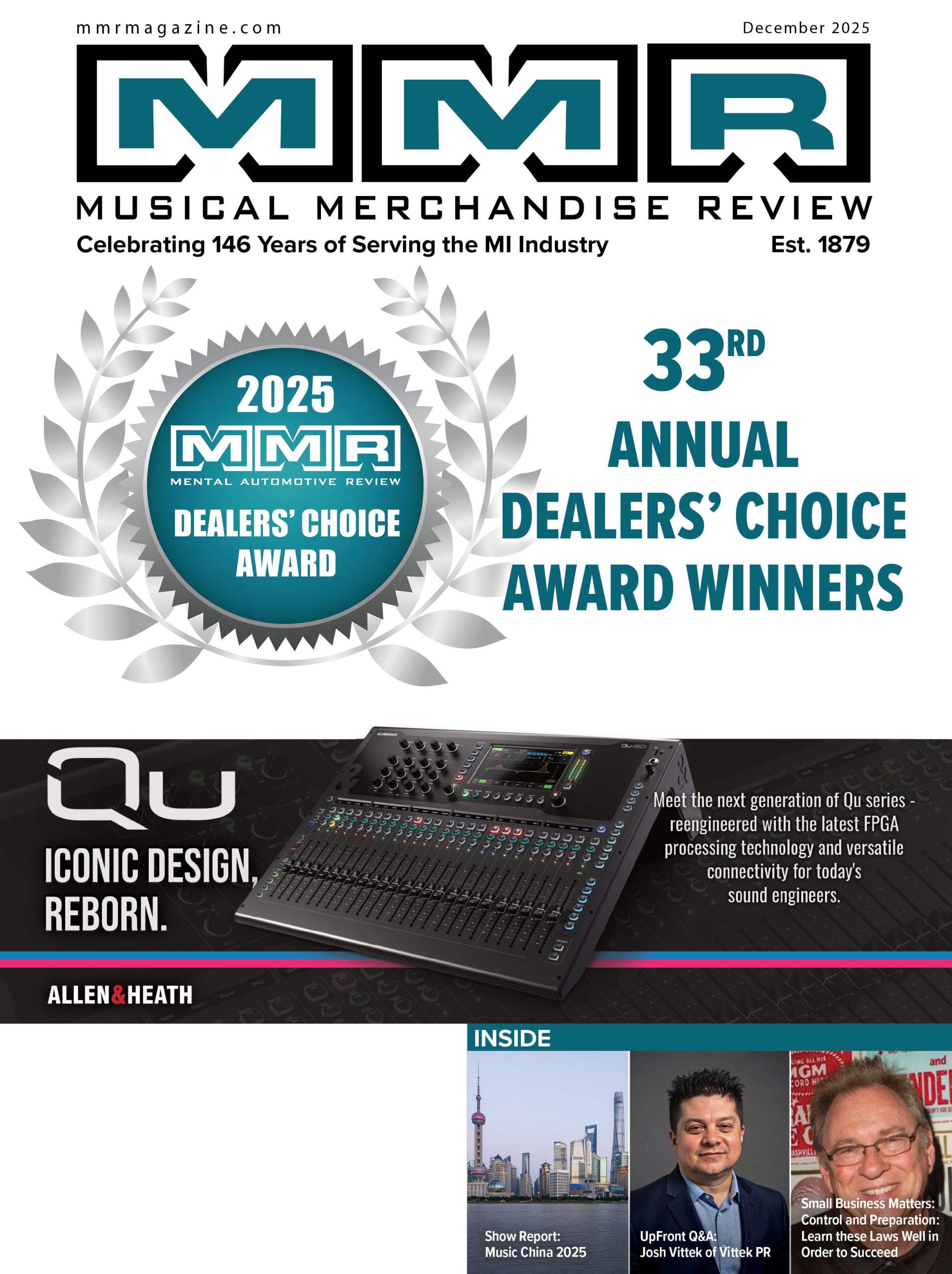
Like the Grinch Who Stole Christmas, the year 2020 stole a great deal from us. In January 2020, this Grinch committed its first crime when it gave us a false sense of hope that a good business year lay ahead. Except for big online retailers, I think we would all agree that the answer to whether that hope materialized wound up being a whopping “no.” However, if you study wrestling you know that even if you’re down on the mat, you must be pinned for two seconds before the match is called. Has it been two seconds yet?
At the 2020 NAMM show, I had the opportunity to moderate a panel for Advanced Audio + Applications Exchange (A3E). This organization provides exposure for fast rising high-tech companies who offer unique platforms and tools designed to provide solutions for the young, touring, music community.
The buzz from the attending young artists and the entrepreneurs at the show was at a fever pitch. After all, why not? At that point the economy was good and new thinking abounded. So, for three days A3E shed light on clever new products for rising companies. It was very 2019: hopeful and expectant. Now we are entering 2021 and we have a new and tremendously challenging landscape. We have had to make different types of choices, and we have had to make them effectively with very little time to vet them. The truth is for the past many months, we have been in survival mode and honestly, we will remain in survival mode for a while.
On a positive note, hopefully we are in the early phases of our new direction – AKA “recovery.” The absolute best advice I can offer is: be creative and be open to new thinking. While many people believe that kind of advice is too “hocus pocus,” I have always included a healthy serving of hocus pocus in my creative diet. So, let’s kick the tires of some good practices for the year ahead.
Phase I: Comprehension and Adaptation
Comprehending workable solutions for the year ahead means you must embrace new and different ways of assessing what’s possible, what’s vital, and what’s realistic. Relationships in the current environment have a renewed importance, and conversation has a newfound respect as well.
The one thing taken from all of us over the last year was human interaction; therefore, its value is at an all-time high, whether that is on the phone, email, text, or Zoom. Civility and courtesy will net you a better result, and I believe it stays that way going forward.
Adaptation, as I use it here, means surrender. However, I don’t mean “surrender” in a weak sense. I mean quite the opposite. Surrender in this case means, you stop fighting the currents and flow in the direction of the current. Surrender is accepting reality and harmonizing with it. It is not always our prerogative to call the tune, but it is our responsibility to dance. Embracing and adapting to surrender is to think like Gregory Hines.
Phase II: Understanding Creative Process vs. Duties
This is the phase that gives me the most trouble. It’s trickier than you think. In the last year, duties for all leaders have increased exponentially – thus, so has stress. As I create my personal calendar, within hours, a plethora of new demands (be they legitimate or just hollow echoes that are parasitic to my time) distract me from creative flow and, as everyone is aware, current circumstances have most small businesses running on a skeleton crew with less opportunity to delegate. This creates a stick in the spokes of the wheel.
What can we do about that? I believe the best tools we have are admission and reduction. For most overachievers, admission is harder than reduction. Admission means you must honestly admit you are human. There is no perfection. Keep in mind, we are all competitive. However, working through the lens of admission is coming to grips with being okay with where you are in the cycle of success. It doesn’t mean you abandon worthwhile goals. It means you put down true markers of where you really are in accomplishing meaningful success.
Meaningful success is a lifetime achievement and a long-term strategy. Reduction is a skill that is newer to most businesspeople, and it is a skill that takes a minute to understand. The first goal in accomplishing reduction is making more mental room. Therefore, mental clutter must go.
What exactly is mental clutter? Mental clutter is any distraction that takes up creative energy-it is anger, worry, frustration, fear, exasperation, or doubt. These all fall into the category of mental clutter along with distraction. They take up space in your mind and rob you of your creativity – so say goodbye to that. Once these nuisances are purged, your creative energy rises, and presto, creative ideas improve. Duties are necessary, but they are a lot like running in place. You end up exhausted and make no progress forward.
Phase III: Implementation and Maintenance
Implementation of new ideas and creative solutions takes courage, and we are at a time when the status quo no longer works. Apologies have lost their capital, and we have grown numb to justifications for poor performance. Implementing and maintaining a new and better way will take all the steps listed above.
Maintenance means staying pledged to the quality of new thinking and embracing strategies where quality is the first priority, but in this instance, I am referring to the quality of better ideas: a philosophy where duties are not competing for our creative time. Don’t let the stink, stank, stunk of the 2020 Grinch steal everything from you. I leave you with my New Year’s Resolution and hopes for you… Here’s to a creative year ahead!
Menzie Pittman is the owner and director of education at Contemporary Music Center in Virginia (CMC). Following a performance and teaching career spanning more than 32 years, he founded CMC in 1989 and continues to perform, teach, and oversee daily operations. He has 50 years of musical experience as a drummer and drum instructor. Menzie is a frequent speaker at NAMM’s Idea Center, and a freelance writer for MMR’s “Small Business Matters.”

























